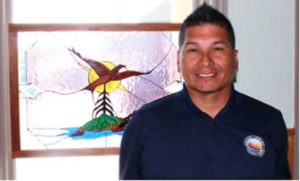Seven First Nations in southwestern Ontario region work together to grow their economies

By Colin Graf
A group of seven First Nations in the southwestern Ontario region have determined that one of the best ways to grow their economies is by spending their money with each other.
The seven First Nations, supported by $74,000 from the Ontario Ministry of Agriculture, Food, and Rural Affairs, have been working together to determine how much money is being spent by their administrations outside of their own territories and find ways to keep the money closer to home, says Jennifer Whiteye, executive director of the Southern First Nations Secretariat (SFNS).
Her agency provides services for Aamjiwnaang First Nation, Chippewas of the Thames, Chippewas of Kettle & Stony Point, Delaware—Moravian of the Thames, Munsee Delaware Nation, Oneida of the Thames, and Caldwell First Nation.
Since work began on the “leakage” study in 2016, Whiteye says the secretariat has found five main areas where money is flowing away from her member nations: education, legal fees, group benefits, busing and transportation, and electricity. The new funding has allowed the group to hire Stephen Tooshkenig, professional golfer and business entrepreneur from Bkejwanong (Walpole Island First Nation), as economic development coordinator, to work on plugging those leaks and other initiatives.
While some money has to go out of communities for youth attending post-secondary education away from home, Whiteye says her staff are hoping to make agreements with some educational institutions for “localized and targeted” training and education in their home communities, particularly in areas of high leakage, such as construction and legal work.
Also in the works is a plan to persuade community administrators to implement preferential hiring and tendering policies for First Nations people.
“We obviously want you to hire our people and we want to get our people trained to fill any positions,” says Whiteye.
She also hopes member nations will agree on joint purchasing of group benefits for First Nation employees to get better deals from insurers by improving economies of scale. She noted that such a deal could possibly extend to local businesses in the future.
The goal of creating a regional First Nations economy in the southwest is a realistic one that is already happening “on a small scale,” says Tooshkenig. As an example, he cites the opportunities when the Secretariat puts on workshops on First Nations governance or on business development, members of the seven nations can all participate and benefit.
Tooshkenig also describes how three or four Indigenous businesses secured contracts with large industrial companies such as Ontario Hydro and Union Gas last summer while attending a procurement conference at Chippewas of Kettle & Stony Point.
The larger firms are also tapping into another of Whiteye and Tooshkenig’s initiatives— an online directory of indigenous businesses in the region. Originally meant to link First Nations people and administrations to local services to eliminate leakage, Tooshkenig says he just discovered outside companies are starting to use the directory, which only went online last Dec.
“Some of the larger players are looking for opportunities to hire First Nations people, and while we let them know the directory is really locally-focused, that doesn’t stop anyone from using it. That’s how business starts,” Tooshkenig describes upon his return to his office from an employment conference at Kettle and Stony Point First Nation.
Whiteye hopes to grow the business directory by identifying every business owner or operator on their territory who can provide goods and services, and getting them listed. With about a dozen listings so far, from auto parts to industrial work clothing to consulting and home improvements, she hopes the website will become the go-to place for administrators and all First Nations people in the southwest when looking for shopping or services.
“We want to know who the businesses are in our community and make sure each community knows where the businesses are,” she says.
It is important to inform the local administrators know about the directory for times when they are tendering contracts.
“The focus is on empowering the communities. How can we cooperatively and collaboratively work together in order to recapture some of that money?” says Tooshkenig.
Tooshkenig adds that working with outside industry creates a “tremendous opportunity for First Nations people working in those sectors. Businesses are quite happy [to hire Indigenous workers]. When you look at our demographics, our populations are becoming more skilled, we have a workforce that is available and has the know-how”.
Another part of the plan to develop a regional First Nations economy is compiling an inventory of assets, not only physical, but also a database of people, skills, and cultural knowledge. Connecting culture to economic opportunities makes a lot of sense for First Nations, says Whiteye. Not only are there possibilities to invite tourists on to First Nations, but many Canadian businesses and service agencies are looking for cultural sensitivity training for their employees; a service that could be provided by her member nations.
“The sky’s the limit on the connections that can be made,” she enthuses.
There are around 200 First Nation businesses in southwestern Ontario, which generate around $25 million annually, according to the SFNS business directory website. Around 3,500 business transactions take place daily on the same First Nations, the site states.


